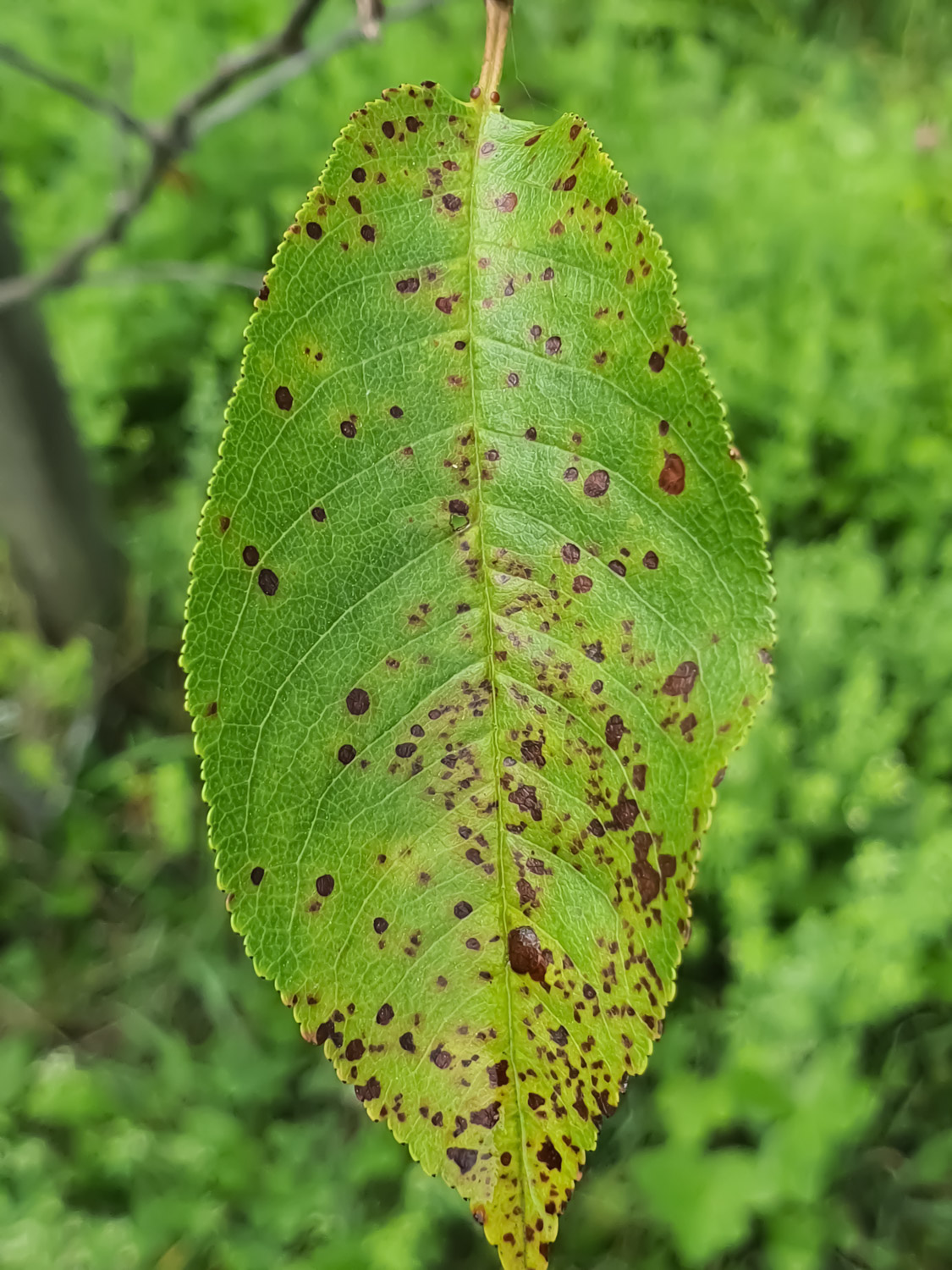
See all posts by this author
Cherry shot hole, a catch all term, could be caused by two different diseases. The two pathogens that commonly produce these symptoms are bacterial leaf spot caused by the bacterium Xanthomonas pruni and cherry leaf spot caused by the fungus Blumeriella jaapii. Both diseases are favored by warm, wet spring weather.
Of course, prevention and treatment for shot hole fungus is included in a Plant Health Care subscription from Arborscapes. (As are myriad other pests and diseases) If you would like to become a part of our Plant Health Care program, reach out to Arborscapes today! Your living landscape will be the envy of the entire neighborhood!
The disease is characterized by small reddish spots on the leaves, which eventually fall out, leading to a “shot hole” appearance. Here are the recommended treatments and management strategies for treating cherry shot hole in the Charlotte area:
Cultural and Physical Controls:
- Sanitation: Regularly collect and dispose of fallen leaves, as the fungus can overwinter in this debris. This helps reduce the source of the fungus for the following year.
- Pruning: Ensure good air circulation by pruning overcrowded branches. Proper airflow can help reduce the humidity that favors fungal growth.
- Watering: Water the tree at the base rather than overhead. Wet foliage can create an environment conducive to fungal growth.
Fungicides
- Systemic Fungicides: Products containing myclobutanil or propiconazole can offer longer protection and can penetrate the leaf tissue, making them effective against the fungus even after infection has occurred.
- Organic Options: Liqui-Cop or Bordeaux mixture (a combination of copper sulfate and hydrated lime) can be used as an organic treatment.
Optimal Timing
- For the best protection, start fungicide applications in early spring just before the buds break open and continue as directed by the product label, especially if the weather is wet. Typically, the most crucial times for application are at bud break, after petals fall, and two weeks after petal fall.
Resistant Varities
- If planting new cherry trees, consider looking for varieties resistant or less susceptible to shot hole disease. Your local nursery or agricultural extension office can provide recommendations tailored to your area.
Monitor and Maintenance
- Regularly inspect your cherry trees for signs of shot hole and other diseases. Early detection and intervention are essential for effective management.
- Maintain the overall health of the tree with proper fertilization, watering, and care practices.
It’s worth noting that while chemical fungicides can be effective, they are best used in combination with cultural practices to achieve sustainable and long-term control. Always read and follow label instructions when applying any pesticide, considering potential impacts on the environment.
And if all of this sounds like too much work, contact Arborscapes to subscribe to our Plant Health Care program, and we will take care of this, other pests, fertilization and health concerns for your living landscape!
See all posts by this author
